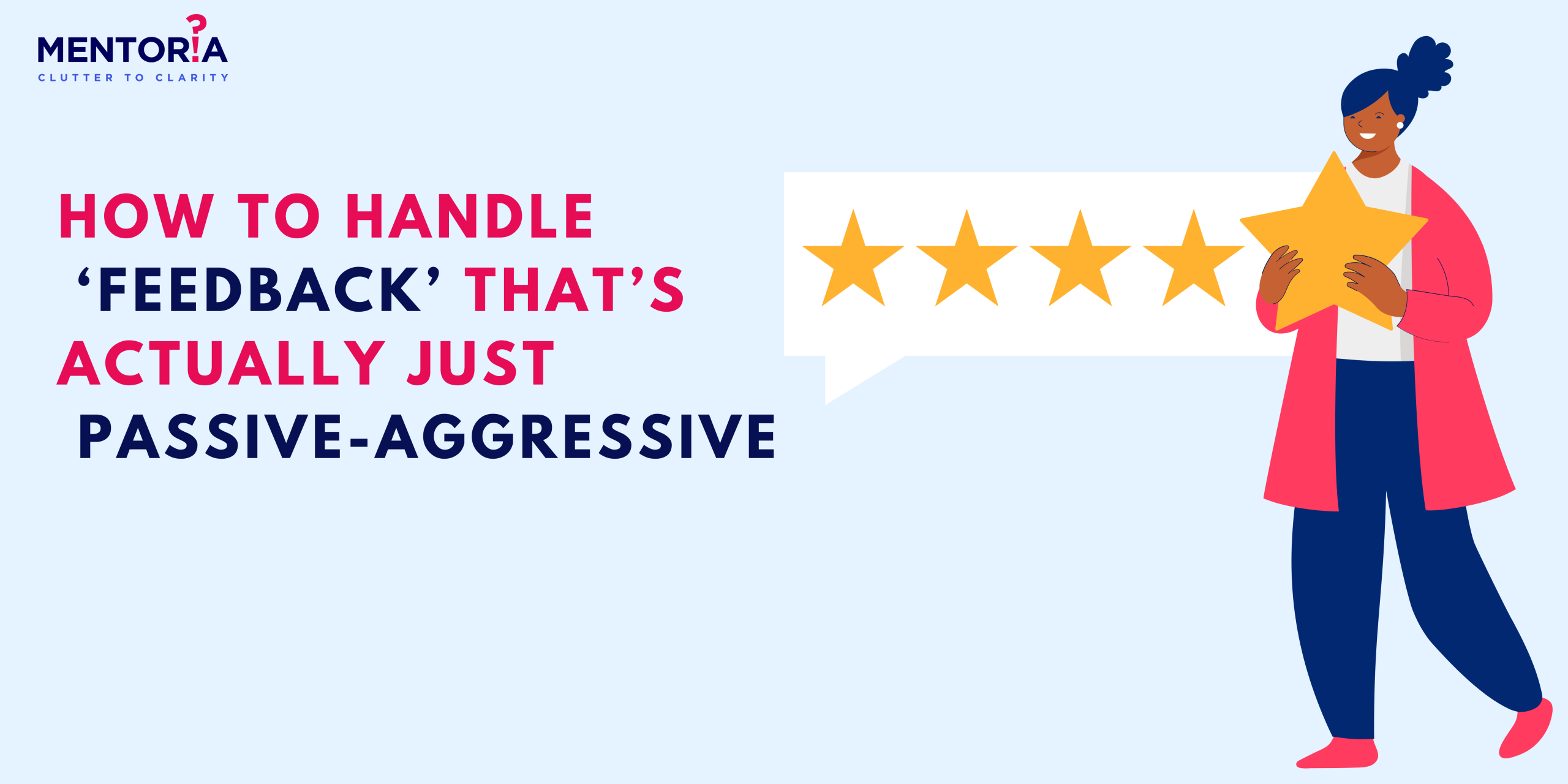How to Handle ‘Feedback’ That’s Actually Just Passive-Aggressive

Not All Feedback Is Helpful. Here’s How to Deal When It’s Passive-Aggressive
“You’ve been doing… okay, I guess.”
“That’s not how I would’ve done it, but sure.”
“Wow, you’re actually on time today!”
Sound familiar?
It’s not just you. Many professionals — especially young ones — face this kind of sugar-coated criticism at work. It’s not direct enough to confront, but not harmless enough to ignore.
Welcome to the world of passive-aggressive feedback. Where compliments have barbs and “advice” feels more like a takedown.
But here’s the deal: You don’t have to silently nod and smile through it. You can deal with it like a pro — without burning bridges or losing your mind.
Let’s break it down.
Step 1: Know What You’re Dealing With
Not all feedback is helpful. Some of it is:
-
Vague (“You just need to improve your attitude.”)
-
Contradictory (“Be more assertive, but not too aggressive.”)
-
Loaded with tone (“If you were more experienced, you’d get it.”)
Passive-aggressive feedback usually avoids direct confrontation but leaves you confused, defensive, or second-guessing yourself. That’s your red flag.
Pro Tip: If feedback feels personal, inconsistent, or like a jab disguised as “concern,” trust your gut. It probably isn’t constructive.
Step 2: Don’t React Emotionally (Yet)
Your first instinct might be to clap back, vent, or spiral. Don’t.
Pause. Breathe. Park the emotion.
You don’t need to respond right away — and definitely not while you’re annoyed. Let the sting settle before deciding how to move forward.
Step 3: Decode the Intent
Ask yourself:
-
Is this coming from someone who regularly undermines others?
-
Is there a grain of truth buried beneath the sarcasm?
-
Could this be their poor communication style rather than intentional harm?
Understanding where the comment is coming from can help you decide: Do I need to address this… or just move on?
Step 4: Ask for Clarity (Without Getting Defensive)
Here’s a game-changer: Flip the script.
Say something like:
-
“Thanks for the feedback — could you clarify what you meant by that?”
-
“Can you give me an example so I understand what to work on?”
-
“I want to improve — what specifically would you suggest I change?”
This shifts the dynamic. It puts the onus on them to be clear. If their comment was just meant to sting, they’ll struggle to explain. If it was genuine (but poorly delivered), this opens the door for a better conversation.
Step 5: Set Boundaries if It Becomes a Pattern
If someone keeps using feedback as a weapon, it’s okay to protect your space.
You can say:
-
“I’d appreciate more direct feedback — it helps me improve faster.”
-
“When comments are vague, I struggle to act on them. Can we keep it specific?”
-
“Let’s focus on the work rather than assumptions.”
And if it continues? Document it. Talk to your manager or HR. You don’t have to tolerate toxic patterns disguised as ‘mentorship.’
Step 6: Talk to a Mentor Who’s Been There
Sometimes, it’s hard to tell what’s “normal” in a workplace and what’s not — especially when you’re early in your career.
Mentoria Connect can help you figure that out.
-
Use the AI chatbot to reflect on the situation, your response style, and what you want to achieve
-
Book a mentor who’s worked in similar industries or roles — someone who’s dealt with difficult colleagues and come out stronger
A 20-minute call can help you feel less crazy — and more in control.
You deserve a workplace where feedback helps you grow — not shrink.






